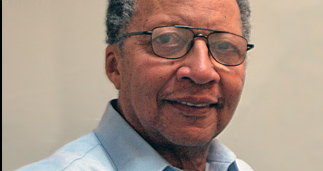Died: July 1, 2014 (at age 76)



Walter Dean Myers (born Walter Milton Myers; August 12, 1937 - July 1, 2014) was an American writer of children's books best known for young adult literature. He wrote more than one hundred books including picture books and nonfiction. He won the Coretta Scott King Award for African-American authors five times. His 1988 novel Fallen Angels is one of the books most frequently challenged in the U.S. because of its adult language and its realistic depiction of the Vietnam War.
Myers was the third U.S. National Ambassador for Young People's Literature, serving 2012 and 2013. He also sat on the Board of Advisors of the Society of Children's Book Writer's and Illustrators (SCBWI).
Walter Milton Myers was born in Martinsburg, West Virginia. After his mother died while giving birth to his younger sister, Myers was given over to Florence Dean, the first wife of his biological father George Myers. Dean raised him in Harlem, New York City, and Myers later took "Dean" as his middle name in honor of his foster parents Florence and Herbert. Herbert Dean was an African-American man and his wife was a part-German and part-Native American woman who taught English at the local high school. Myers' life as a child centered on the neighborhood and the church. The neighborhood protected him and the church guided him. He was smart but did not do that well in school. Suffering from a speech impediment, he cultivated the habit of writing poetry and short stories and acquired an early love of reading. Myers attended Public School 125 on Lasalle Street, before dropping out (although Stuyvesant High School now claims him as a graduate) and joining the U.S. Army on his 17th birthday.
Myers wrote well in high school, which one of his teachers recognized. She also suspected that he would drop out and advised him to keep writing no matter what happened. He did not exactly understand what that meant but years later, while working on a construction job in New York, he remembered her words. Myers would write at night, soon writing about his difficult teenage years. When asked what he valued most, he replied, "My books. They were my only real friends growing up."
Myers lived in Jersey City, New Jersey, with his family. His family includes his wife; son, author and illustrator Christopher Myers; son, Michael; six grandchildren; and two great-grandchildren. A daughter, Karen, predeceased him.
Myers received the Margaret Edwards Award from the American Library Association in 1994 for his contribution in writing for teens. For his lifetime contribution as a children's writer he was U.S. nominee for the biennial, international Hans Christian Andersen Award in 2010.
For the years 2012 and 2013 Myers was the National Ambassador for Young People's Literature by appointment of the Library of Congress, a two-year position created to raise national awareness of the importance of lifelong literacy and education.
The ALA Margaret A. Edwards Award recognizes one writer and a particular body of work for "significant and lasting contribution to young adult literature". Myers won the annual award in 1994, citing four books published from 1983 to 1988: Hoops (1983), Motown and Didi (1985), Fallen Angels (1988), and Scorpions (1988). The young-adult librarians observed that "these books authentically portray African-American youth, but their appeal is not limited to any particular ethnic group. The writing of Walter Dean Myers illustrates the universality of the teenage experience in urban America." He was a two-time runner-up for the annual Newbery Medal, recognizing the previous year's "most distinguished contribution to American literature for children", in 1989 for The Scorpion and in 1993 for Somewhere in the Darkness. The ALA split the Newbery several years later, establishing the Michael L. Printz Award for young-adult literature. Myers was the inaugural winner for Monster (HarperCollins, 1999), which was thereby designated the year's "best book written for teens, based entirely on its literary merit".
Myers first published book was a contest winner: Where Does the Day Go?, written by Myers and illustrated by Leo Carty (Parents Magazine Press, 1969). It won a Council on Interracial Books for Children Award, 1968.
Myers was a finalist for the for Young People's Literature: in 1999 for Monster, in 2005 for Autobiography of My Dead Brother, and in 2010 for Lockdown. Myers is mentioned in Sharon Creech's 2001 poetic novella Love That Dog, in which a young boy admires Myers and invites him to visit his class.
On July 1, 2014, Myers died at Beth Israel Medical Center in Midtown Manhattan after a brief illness. His last written work, a few months before his death, was an essay entitled "Where are the People of Color in Children's Books?".
[ Source: Wikipedia ]